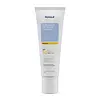What's inside
What's inside
 Key Ingredients
Key Ingredients

 Benefits
Benefits

 Concerns
Concerns

 Ingredients Side-by-side
Ingredients Side-by-side

Cyclopentasiloxane
EmollientDimethicone Crosspolymer
Emulsion StabilisingPEG-12 Dimethicone/PPG-20 Crosspolymer
Ethylhexyl Methoxycinnamate
UV AbsorberC12-15 Alkyl Benzoate
AntimicrobialDiethylamino Hydroxybenzoyl Hexyl Benzoate
UV FilterDiethylhexyl Butamido Triazone
UV AbsorberCaprylyl Methicone
Skin ConditioningZinc Oxide
Cosmetic ColorantTitanium Dioxide
Cosmetic ColorantBis-Ethylhexyloxyphenol Methoxyphenyl Triazine
Skin ConditioningCaprylic/Capric Triglyceride
MaskingPhysalis Angulata Extract
Skin ProtectingDiethylhexyl Syringylidenemalonate
Skin ProtectingParfum
MaskingCyclopentasiloxane, Dimethicone Crosspolymer, PEG-12 Dimethicone/PPG-20 Crosspolymer, Ethylhexyl Methoxycinnamate, C12-15 Alkyl Benzoate, Diethylamino Hydroxybenzoyl Hexyl Benzoate, Diethylhexyl Butamido Triazone, Caprylyl Methicone, Zinc Oxide, Titanium Dioxide, Bis-Ethylhexyloxyphenol Methoxyphenyl Triazine, Caprylic/Capric Triglyceride, Physalis Angulata Extract, Diethylhexyl Syringylidenemalonate, Parfum
Water
Skin ConditioningEthylhexyl Methoxycinnamate
UV AbsorberButyl Methoxydibenzoylmethane
UV AbsorberBenzophenone-3
UV AbsorberPhospholipids
Skin ConditioningButylene Glycol
HumectantGlycerin
HumectantZea Mays Starch
AbsorbentC12-15 Alkyl Benzoate
AntimicrobialTitanium Dioxide
Cosmetic ColorantSilica
AbrasiveDimethicone
EmollientAloe Barbadensis Leaf Juice
Skin ConditioningEthylhexyl Palmitate
EmollientIsopropyl Myristate
EmollientCitrullus Lanatus Fruit Extract
Skin ConditioningAcrylates/C10-30 Alkyl Acrylate Crosspolymer
Emulsion StabilisingSorbitan Stearate
EmulsifyingSucrose Cocoate
EmulsifyingSodium Lactate
BufferingGlyceryl Stearate
EmollientPEG-100 Stearate
Betaine
HumectantFructooligosaccharides
HumectantBeta Vulgaris Root Extract
Skin ConditioningTocopheryl Acetate
AntioxidantMenthyl Lactate
MaskingOxothiazolidine
Skin ProtectingPhenoxyethanol
PreservativeSodium Benzoate
MaskingSodium Hydroxide
BufferingSodium Gluconate
Skin ConditioningSodium Hyaluronate
HumectantWater, Ethylhexyl Methoxycinnamate, Butyl Methoxydibenzoylmethane, Benzophenone-3, Phospholipids, Butylene Glycol, Glycerin, Zea Mays Starch, C12-15 Alkyl Benzoate, Titanium Dioxide, Silica, Dimethicone, Aloe Barbadensis Leaf Juice, Ethylhexyl Palmitate, Isopropyl Myristate, Citrullus Lanatus Fruit Extract, Acrylates/C10-30 Alkyl Acrylate Crosspolymer, Sorbitan Stearate, Sucrose Cocoate, Sodium Lactate, Glyceryl Stearate, PEG-100 Stearate, Betaine, Fructooligosaccharides, Beta Vulgaris Root Extract, Tocopheryl Acetate, Menthyl Lactate, Oxothiazolidine, Phenoxyethanol, Sodium Benzoate, Sodium Hydroxide, Sodium Gluconate, Sodium Hyaluronate
 Reviews
Reviews

Ingredients Explained
These ingredients are found in both products.
Ingredients higher up in an ingredient list are typically present in a larger amount.
C12-15 Alkyl Benzoate is made up of Benzoic Acid and long chain alcohols. It has a low molecular weight.
C12-15 Alkyl Benzoate is an emollient and texture enhancer. Due to its solubility, it is often used in sunscreens to help evenly distribute active ingredients.
As an emollient, C12-15 Alkyl Benzoate helps soften and hydrate your skin. Emollients create a film on your skin that traps moisture within.
This ingredient has been reported to cause eye irritation.
Learn more about C12-15 Alkyl BenzoateEthylhexyl Methoxycinnamate is an organic compound that provides UVB protection. It often goes by the more common name of octinoxate. It is created from methoxycinnamic acid and 2-ethylhexanol.
Ethylhexyl Methoxycinnamate absorbs UVB rays with wavelengths between 280-320 nm. UV absorbers protect your skin by using chemical reactions to convert UV rays into heat and energy.
UVB (290-320 nm) rays emit more energy than UVA rays. They are capable of damaging DNA, causing sunburns and are thought to be linked to skin cancer.
The state of Hawaii has banned sunscreens containing octinoxate due to its potential impact on coral reefs. More research is needed to bridge gaps in this research. The European Union allows higher levels of octinoxate in sunscreens than the US and Australia.
Ethylhexyl Methoxycinnamate is oil soluble. It is not stable and may lose efficacy when exposed to sunlight.
Learn more about Ethylhexyl MethoxycinnamateTitanium dioxide is a mineral UV filter widely used in sunscreens and cosmetics.
It is one of only two UV filters officially classified as “mineral” by regulatory agencies, the other being zinc oxide.
Titanium dioxide provides broad-spectrum protection mostly in the UVB and UVAII range, with some protection in the UVAI range.
While its UVA protection isn’t as strong as zinc oxide’s, the difference is minor.
A common myth is that mineral UV filters reflect UV light. However, modern research shows titanium dioxide absorbs UV radiation like chemical filters (~95% absorption & 5% reflection).
Thanks to its non-irritating nature, titanium dioxide is suitable for sensitive, acne-prone, or redness-prone skin. It is unlikely to cause "eye sting" like other sunscreen ingredients.
A major drawback of this ingredient is its white cast and thick texture. This is why mineral sunscreens often leave a white cast and are less cosmetically elegant than chemical/hybrid sunscreens.
To improve white cast and spreadability, micronized or nano-sized titanium dioxide is often used.
There are ongoing concerns surrounding nano-titanium oxide's impact on marine ecosystems.
There is no conclusive evidence that any form of titanium oxide (or any other sunscreen ingredients) will cause harm to marine ecosystems or coral reefs. The science is still developing but many consumers are keeping a close eye on this issue.
Please note, many destinations have reef-safety sunscreen rules. For instance, the U.S. Virgin Islands advises all visitors to use non-nano mineral sunscreens.
Nano mineral sunscreens once raised safety concerns about absorption into skin.
Extensive research has shown that they do not penetrate healthy or damaged skin; they remain safely on the surface and the top layer of dead skin (stratum corneum).
You'll likely find titanium dioxide bundled with alumina, silica, or dimethicone. These ingredients help make titanium dioxide highly photostable; this prevents it from interacting with other formula components under UV light.
Learn more about Titanium Dioxide